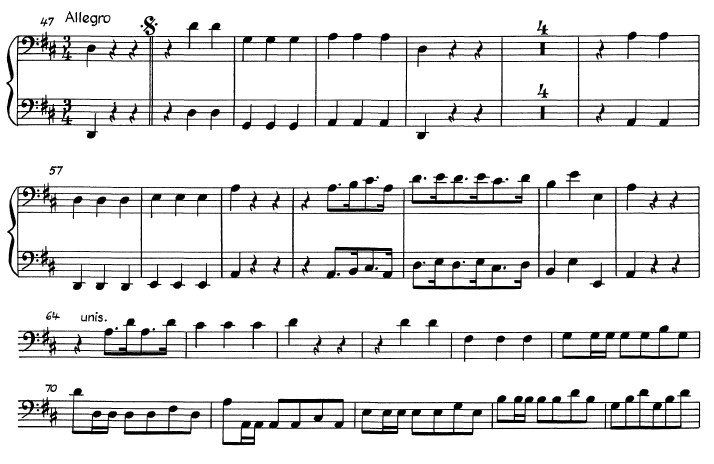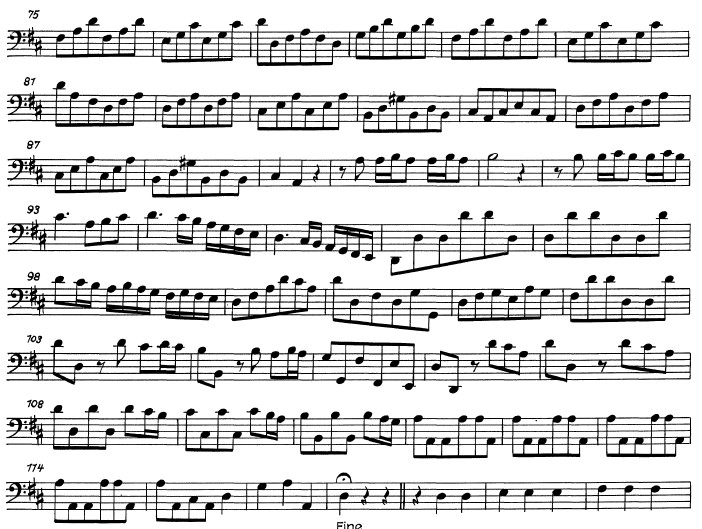George Frideric Handel (1685-1759)
Royal Fireworks Music (1749)
Movement 1 Overture
- One bassoon part m. 56-117 (62 total measures)
- Range – (D1-E3)
- Bass clef only
Performance issues: Phrasing, Rhythm, Note patterns, Accidentals, Articulation


About the music: Handel was a German-bom composer who wrote many major works while working in England. This composition was written to celebrate the signing of the Treaty of Aix-la-Chapelle; one of the movements is even titled “La Paix.” Festivities were to include a gigantic fireworks display in London’s Green Park accompanied by this music. As it turned out, the music met with great success but the fireworks display did not fare so well; it was a memorable evening due to an unplanned blaze of significant proportion. When commissioned by King George I, the Royal Fireworks Music was conceived of as outdoor music, and at the king’s request, it was written for as many brass and winds as possible.
The original orchestra is said to have contained twelve bassoons and contrabassoon, along with a full complement of trumpets, horns, oboes, and timpani. It is thought that strings were added to the orchestration by Handel, perhaps for that evening, but more likely for a later performance.
This excerpt is included to provide more work in Baroque performance style. As was the case with Bach, fast movements generally have a pulsed, energetic sense. The rhythmic drive generated in the bass line often is responsible for propelling the music forward and creating much of the intrinsic energy associated with music from the period. Articulation is also quite consistent in this music, so the student would do well to develop a sense for the detached, non-legato/non-staccato style. Strong but supportive bass lines are important in the Baroque sound ideal, and the line is important because it generates the harmonic basis for the entire texture. In this overture, as is usually the case, the bassoon doubles the low strings most of the time.
About performing the excerpt: Melodically, the excerpt provides much practice in negotiating wide interval leaps. Exact beat subdivision is required so that the two sixteenths on the second half of the beat are accurate. The articulation style must be consistent throughout and some effort should be devoted to matching the effect of the low strings. An overall dynamic level of a sensitive MF should be the general rule to start; echo effects and other nuances will become apparent as the whole texture is heard and as the conductor gives shape to the movement.